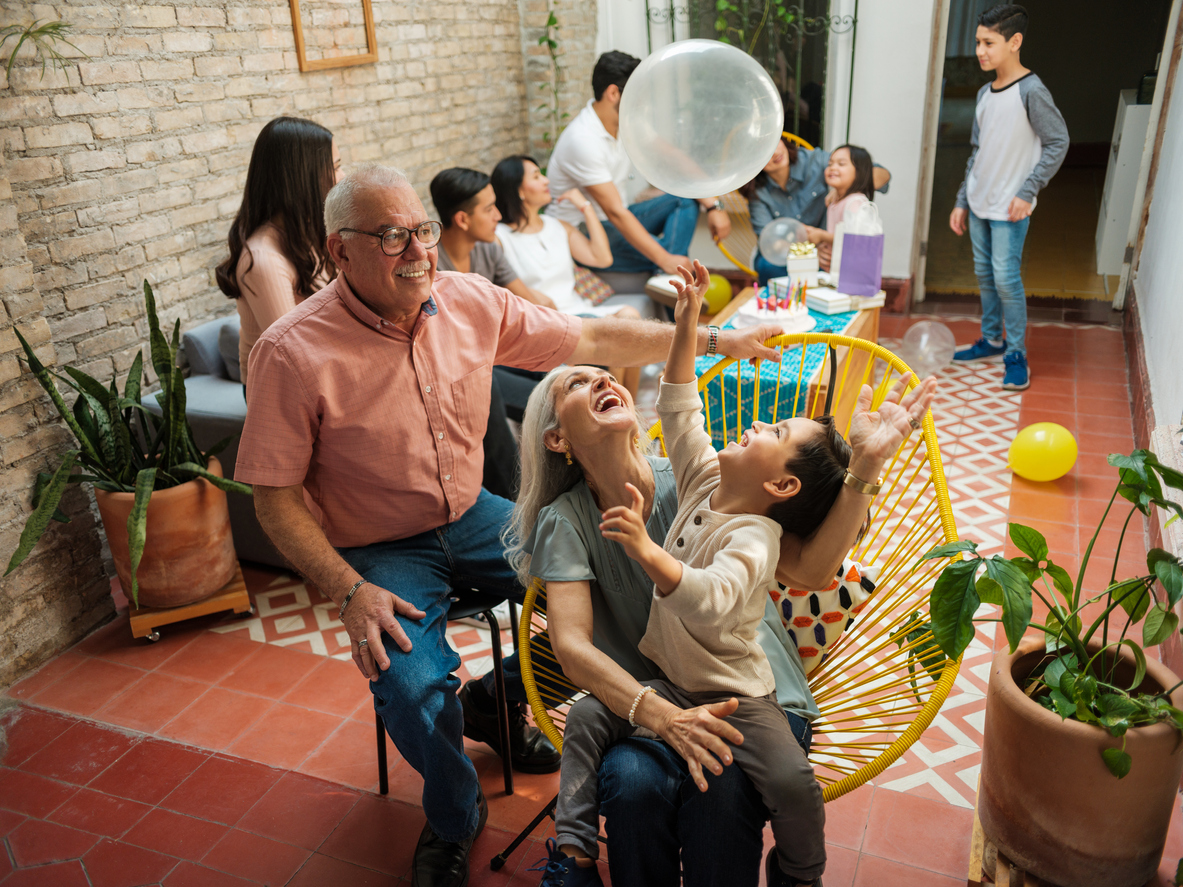10 Lessons I Learned From Being a Foster Parent

For nearly 35 years, May has been National Foster Care Month in the United States. According to the most recently available federal figures, about 400,000 children are in care at any given time.
As a foster-adoptive mother who spent nearly four years with kids in care, here are the top ten things I learned from fostering.
Related: Should You Become a Foster Parent? – Rules, Money, Parental Rights
1. It's Your Job to Advocate for Your Child

Kids in care are experiencing fundamentally unstable, uncomfortable, unfamiliar situations. Meanwhile, court dates change, parents no-show or bring unexpected guests, social workers drop off the radar without warning, or promised resources disappear. I learned that I should not count on all of the information in my children’s files to be accurate, or be certain that I’d be notified of key dates and changes. Succeeding as a foster parent meant becoming proactive, regularly making notes, sending emails, making calls, and asking pointed questions.
This need for advocacy continues outside of court cases. Foster children can struggle with emotional and psychological needs, medical concerns, stress, and trauma. They need supportive adults to help them navigate these intense stressors.
To help their kids meet all of these needs, foster families often qualify for outside resources; however, the path to obtaining help can be complicated. There were many times that we received misinformation, conflicting instructions, or were notified of a new caseworker who had no record of items that previous caseworkers had promised us. We learned that foster parents should not be afraid to verify information with secondary sources or ask for documentation in writing.
Letters, email chains, text conversations, and voicemails all became very important in helping to establish what needed to be done.
2. Not Everyone Will Support You
One of the toughest lessons from fostering is that not everyone in your life and community will be on board with your decision to foster. There is a pervasive social myth that foster kids are problem kids. The truth is that kids in care are coping with personal traumas and are not there by choice.
Surrounding both themselves and their foster kids with a support network is vital for foster families. This can include friends, classmates, peers from local organizations and faith groups, teachers, and extended family. Without these systems in place, the struggles of fostering can make even the most dedicated parents feel incredibly alone.
3. It Takes a Village

Each foster case represents an entire team of people. Of course, there are the children, caregivers, and any biological parents or relatives. But for the court cases, there are also attorneys, caseworkers, judges, CASAs, and guardians ad litem involved. CASA stands for court-appointed special advocate, a trained volunteer who checks on the child and reports on their interests. A guardian ad litem fills a similar role, representing the child’s needs in court and coordinating with all affected parties.
The proverbial “village” expands beyond court though, including teachers, doctors, therapists, and other professionals who may be supervising, monitoring, or interviewing the children at various intervals.
4. Not Everybody Goes Home
One takeaway from our foster training was that in some cases, children that cannot safely go home may remain in state custody indefinitely rather than being adopted, usually for medical or safety reasons.
Excluding these kinds of circumstances, cases can be resolved in several ways: returning the child home, establishing guardianship, or completing an adoption. Guardianship is a legal resolution that allows children to come out of foster care and receive a permanent home with a caregiver, without birth parents being forced to give up all of their rights. This differs from adoption, which requires termination of parental rights before a foster child can be adopted by someone else. This may happen voluntarily, if birth parents agree that the move is in the child’s best interest, or involuntarily, by court order.
Adoptions themselves generally involve one of two pathways, open and closed. The available choices depend on jurisdiction. Open adoptions facilitate more contact with biological family. Closed adoptions create more privacy for the child.
5. Caregiving is Expensive
It’s a common assumption that foster parents are well paid. As it turns out, not everyone in this kind of caregiving situation receives financial compensation at all. The processes for foster families to qualify for a stipend are not always straightforward. We had been caregiving unpaid for about a year before one of our social workers finally explained what we could do to qualify for state support.
The financial support families receive can help cover some of the costs of caring for a child, but any funds caregivers receive go quickly. Adding children to a household can require upgrades to vehicles, bedrooms, and common spaces. When you choose to foster you need to consider the costs of a larger home, childcare, time off work, and gas for various appointments and visits. Car seats, baby gear, clothing, extracurriculars, and school events are just some of the potential family costs. Stipends may also be adjusted based on the age and needs of the child; for instance, a family may receive a payment that helps with diapers.
In our experience, such allowances did not cover the full cost of diapers, pull-ups, and formula for the month. Stipends were not sufficient to allow either of the two parents in our household to quit work for full-time caregiving.
6. Foster Children Aren't Always Orphaned, But Their Parents Are Unable to Care for Them

Kids enter care because something has happened to the adults in their lives. However, most of these foster kids still have living biological parents, and those parents have significant legal rights that must be respected. A child may be placed in temporary foster care while a parent is incarcerated, undergoing treatment for addiction, or financially unable to provide them with proper care. New and prospective foster parents should be aware that the official goal of state care is to return children home whenever possible.
The majority of active foster cases end with children being sent back to their families of origin. This is the way the system is intended to work.
Although specific steps and requirements vary, foster care enables children to be temporarily cared for by other adults. In the interim, states should be providing birth parents with opportunities and resources to address any issues that have been cited as part of their cases. If these processes—which can include court updates and extensions—are successful, the case is supposed to be closed, and the children sent home. If they are not, a foster case can sometimes advance to an adoption scenario.
This process of caring for children while their parents work toward meeting state requirements can take months to years. Until they go home, change caregivers, or become adopted, kids in foster care are living in limbo. Their foster parents are not their legal parents, but they are modeling and filling that parental role in the interim. It’s important to remember that the children do not have a choice. They may be angry, grieving, depressed, or anxious.
7. Foster Children Always Have Trauma
Both foster and adoptive parents should attend trauma training if it is provided. Kids in care are dealing with the trauma of being separated from the homes and families that they know. In some cases, they are also dealing with personal tragedy. Recognizing signs of trauma and trauma-related stressors helps caregivers connect to and understand the feelings and needs of the children in their care.
8. Adopting From Foster Care is Time-Consuming But Out-of-Pocket Costs are Usually Cheap/ Free
Contrary to popular belief, adopting within the United States is not particularly costly, if you choose to go through the foster care system. However, there are differences in how states may organize the adoptive side of the process.
Adopting through care may come with low fees or no fees. Adoptive families may also receive ongoing support such as medical care or financial stipends. Although we did pay for personalized legal advice in one case, our foster adoptions cost virtually nothing out of pocket otherwise, except a fee or two for birth certificates.
Federal law sets the standard for involuntary termination of parental rights at 15 out of 22 months in care. This means that if a child is in and out of foster care for at least 15 months within one 22-month period, the process to terminate the rights of biological parents can be triggered. This does not mean parents will lose rights immediately. Instead, it means most foster families can expect to wait more than a year, and often several years before they can even think about adopting a child in their care. There are separate procedures for biological parents who decide to relinquish their rights voluntarily.
9. Kids Should Always Be Treated as a Complete Part of the Family
It can be hard to bond with foster children, not knowing when or if they will have to leave, or whether you will see them again, but foster families have a vital role in helping to model healthy family life and relationships to the children in their care, however temporarily. Excluding foster kids from regular family activities sends a clear signal that they don’t fully belong.
While some families may need to make adjustments to accommodate a child’s religious needs, or disabilities, the end goal should always be inclusivity and acceptance. While our kids were in state care, they were as fully included in family trips, holidays, sports, chores, and projects as they could be for their respective ages. Every child had their birthday celebrated.
Integrating a foster child into your family can get complicated since gifts and plans can be interrupted by orders to return home. But foster kids deserve to have something that they can point to and call their own, even if it’s just clothes that actually fit.
In the United States, it is now federal policy to promote “normalcy” guidelines. That is, foster families today have a certain amount of legal leeway in decision-making that is intended to enable foster children to have as “normal” a childhood experience as reasonably possible.
10. Foster Care is a Co-Parenting Situation
Children in foster care are there because something has happened within their original families. Most already have biological or legal parents, and during their time in care, all of the children are also under state oversight.
For foster families, this means raising kids in care is closer to co-parenting, with multiple parental and authority figures still in the picture. The level of independence for foster parenting decisions varies somewhat by jurisdiction and case, but foster parents cannot make all of their choices in a vacuum.
For instance, if a child gets hurt and needs medical care, the social worker will have to be notified. Birth parents may be permitted to give input on everything from religion to hairstyle, and foster parents may be required to produce children for visitation or for social worker visits.
Children typically must attend public schools rather than home or private schools. The co-parenting negotiations extend to things such as travel and social media involvement as well. Foster parents should always work to clarify local rules and make sure that everyone involved is on board before engaging in any public activity with a child in care.
Foster care is a huge commitment, but the need for caregivers is ongoing. To learn more about whether fostering could be the right choice for your family, start by visiting your state’s health and human services department online. This is the branch of state government that oversees several kinds of public services, including foster care and foster training.

